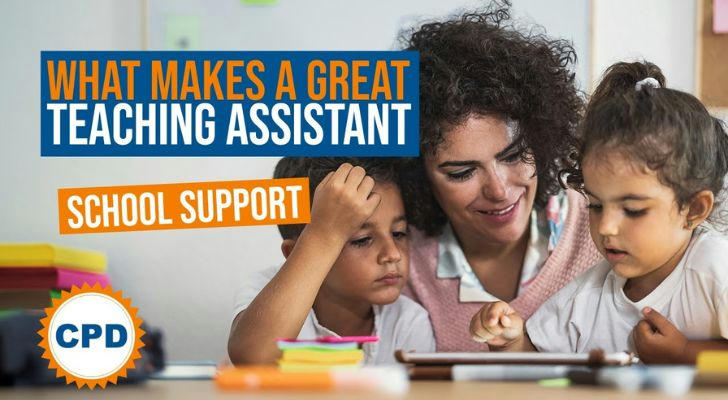What Does a Teacher Assistant Do in a Classroom?
In today’s educational landscape, classroom dynamics are more complex than ever. With diverse student needs, individualized learning plans, and a growing emphasis on inclusive education, the role of a Teacher Assistant (TA) has become a vital part of the academic environment. Though often working behind the scenes, TAs play a significant role in enhancing student learning and supporting teachers in day-to-day classroom activities.
This guide aims to explain what a teacher assistant actually does in a classroom, based on real tasks, practical examples, and observable outcomes—without overcomplication or jargon.

📚 Supporting the Lead Teacher: The Core Duty
One of the primary responsibilities of a teacher assistant is to support the lead teacher. This support includes both instructional and administrative tasks, such as:
- Preparing materials for lessons (printing worksheets, organizing supplies)
- Setting up classroom activities before students arrive
- Assisting with classroom management during instruction
- Supervising small group activities or individual assignments
These tasks allow the lead teacher to focus more on teaching rather than logistics. When classroom routines run smoothly, the learning experience improves for everyone involved.
✏️ Helping Students Stay on Track Academically
Teacher assistants are often assigned to work directly with students, especially those who may require additional help. Depending on the grade level and classroom structure, their academic support may include:
- Reviewing instructions with students who need clarification
- Assisting with reading or math assignments
- Encouraging participation in group work
- Providing one-on-one guidance during independent study periods
In inclusive classrooms, TAs also help students with learning disabilities or language barriers stay engaged with the curriculum. This targeted assistance can significantly impact student performance and confidence.

🧠 Reinforcing Classroom Behavior and Routines
Beyond academics, TAs also play a key role in shaping a positive classroom environment. Maintaining order, encouraging respectful behavior, and reinforcing routines are part of their daily responsibilities.
Typical duties may include:
- Monitoring hallways, recess, or lunch periods
- Redirecting disruptive behavior calmly and consistently
- Reminding students of classroom rules
- Assisting students with transitions between activities
With the additional adult presence in the room, teachers can focus more on instruction while knowing that student behavior is being appropriately guided.
📊 Supporting Individualized Education Programs (IEPs)
In classrooms where students have IEPs (Individualized Education Programs), TAs may be responsible for helping to implement these specialized plans. This includes:
- Modifying lesson materials to suit a student’s learning level
- Assisting students with special needs during classwork
- Recording observations for teacher review
- Communicating any issues that arise during the school day
According to the National Center for Education Statistics, approximately 15% of public school students in the U.S. receive special education services. Teacher assistants serve as a bridge between these students and the core instruction, helping to ensure equal access to learning opportunities.
Source: National Center for Education Statistics, 2023
🧽 Administrative and Organizational Help
Classroom organization doesn’t happen on its own. TAs are often the ones keeping everything running behind the scenes. Some of their typical administrative tasks include:
- Taking attendance
- Grading basic assignments or quizzes
- Updating bulletin boards or classroom displays
- Preparing or organizing teaching materials for the next lesson
These responsibilities help reduce the overall workload on teachers and make the classroom more efficient.
🏫 Building Positive Relationships with Students
Effective teacher assistants take time to build rapport with students. Unlike lead teachers, who may need to split attention across the entire class, TAs often have more time to engage with students on a personal level.
This can lead to:
- Improved student engagement and motivation
- A trusted adult presence for students to approach with questions or concerns
- Increased student participation, especially for those who are shy or hesitant
When students feel seen and supported, they are more likely to thrive academically and emotionally.
💬 Assisting with Communication
TAs can also act as a communication link between students, teachers, and sometimes even parents. This includes:
- Translating instructions for English language learners (in bilingual settings)
- Relaying student progress to the lead teacher
- Noting patterns of behavior that may require attention
- Helping during parent-teacher meetings if requested
This communication role adds another layer of support to the classroom ecosystem.

🌟 Skills That Make a Teacher Assistant Effective
Being a successful teacher assistant involves more than simply following instructions. The role requires a specific set of soft and hard skills, including:
- Patience and empathy
- Clear communication
- Organization and time management
- Adaptability and problem-solving
- Basic literacy and numeracy knowledge
- Familiarity with educational tools or software
Many school districts also require TAs to have completed specific training or certifications, particularly when working with special education students.
🎓 Education and Career Pathways
While a college degree may not be required for all TA positions, some level of postsecondary education or training is often preferred. Common pathways include:
- Associate degrees in education or child development
- Certificates from teacher assistant training programs
- On-the-job training with continued professional development
According to the U.S. Bureau of Labor Statistics, the demand for teacher assistants is expected to grow by 5% between 2022 and 2032. This trend reflects the ongoing need for classroom support across all grade levels.
Source: U.S. Bureau of Labor Statistics, Occupational Outlook Handbook, 2024
📌 Summary: A Vital Classroom Role
A teacher assistant is much more than an extra set of hands in the classroom. From instructional support and behavior management to administrative assistance and student mentoring, the TA plays a multifaceted role in supporting educational success.
Understanding what teacher assistants do provides clarity not just for those interested in entering the field, but also for parents, school administrators, and anyone involved in education. With the right preparation and mindset, the role of a teacher assistant can be both impactful and rewarding—contributing directly to the future of students and the overall learning environment.
